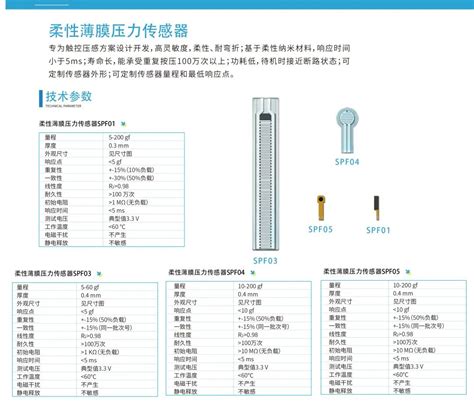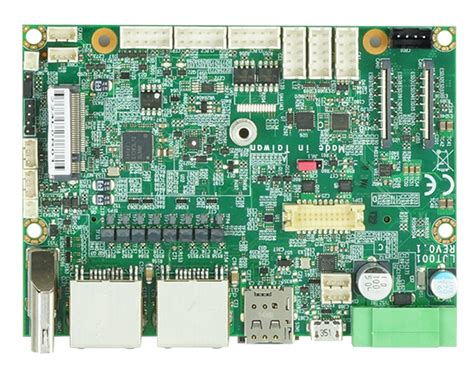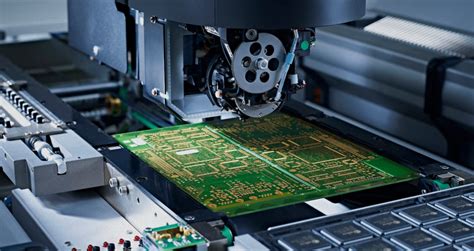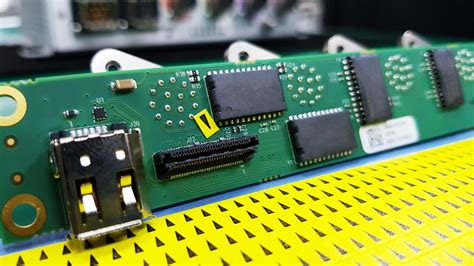Unlocking the Future: Advanced Printed Circuit Technology Insights
Key Takeaways
Advanced printed circuit technology is transforming the landscape of electronics, offering numerous advantages that directly impact pcb manufacturing processes. As you delve into this field, it’s crucial to understand the varying pcb manufacturing costs that are associated with different technologies and materials. The shift towards more sophisticated designs in pcb manufacturing enables companies to create smaller, more efficient circuits while maintaining functionality. You may find that collaborating with reputable pcb manufacturing companies allows you to leverage state-of-the-art methods and scale your business effectively. Additionally, keeping an eye on the evolving industry standards can help you stay competitive, as innovative designs can lead to enhanced performance and lower overhead costs in your pcb manufacturing business. Embracing these insights will equip you with the knowledge necessary to navigate this dynamic sector successfully.
Unlocking the Future: Overview of Advanced Printed Circuit Technology
As the demand for electronic devices continues to soar, the importance of advanced printed circuit technology in shaping the landscape of electronics cannot be understated. This transformative field integrates cutting-edge designs for pcbs, ensuring your products are not only reliable but also efficient. The evolution in pcb manufacturing processes has led to remarkable advancements, allowing manufacturers to create intricate layouts that cater to the complexities of modern electronics. To stay competitive, many pcb manufacturing companies are adopting automation and innovative techniques, which help to lower the pcb manufacturing cost while improving quality and speed.
The exploration of various materials has opened new avenues for developing lightweight and robust circuits tailored for specific applications across different sectors. By leveraging these advancements, your pcb manufacturing business can enhance productivity and maintain a competitive edge. For instance, incorporating automation in production lines can minimize errors and reduce turnaround times, ultimately leading to cost savings that benefit your bottom line.
| Benefit | Description |
|---|---|
| Enhanced Design Flexibility | Ability to create complex circuits with high-density interconnections |
| Increased Production Speed | Automation leads to faster prototyping and manufacturing processes |
| Reduced Costs | Efficient practices contribute to lower overall costs |
| Improved Reliability | Superior materials and designs result in more durable products |
In this evolving landscape, understanding the strategic advantages of adopting advanced printed circuit technology will position you favorably within your industry niche. By staying informed about technological trends, you can effectively meet consumer needs while driving innovation within your organization. For more information on cutting-edge solutions in PCB design and manufacturing, visit Andwin PCB.
Innovative Designs in Printed Circuit Technology
In today’s rapidly evolving electronics landscape, innovative designs in printed circuit technology are at the forefront of enhancing functionalities and performance. You may find that pcb manufacturing processes are increasingly incorporating flexible circuit designs that not only save space but also improve the durability of electronic components. This shift is largely due to the demand for more compact devices and advanced features, which require designs that can accommodate multiple functionalities within a limited space. As you explore pcb manufacturing companies, you’ll discover that embracing these modern techniques can significantly influence the pcb manufacturing cost, often allowing for reductions through increased efficiency and waste minimization. Furthermore, innovative designs often lead to new applications across diverse sectors—from consumer electronics to automotive industries—ultimately enhancing the pcb manufacturing business landscape. By understanding these emerging design trends, you position yourself to leverage their benefits, ensuring your projects meet both current industry standards and future demands.
Enhancing Manufacturing Efficiency: Strategies and Best Practices
In the realm of pcb manufacturing, enhancing manufacturing efficiency is paramount for achieving competitive advantages and reducing costs. You might consider implementing lean manufacturing principles, which can streamline processes and minimize waste. By focusing on process optimization, you can significantly improve the productivity of your pcb manufacturing business. Additionally, investing in advanced technologies, such as automation and predictive maintenance systems, not only elevates production speed but also helps in maintaining high quality standards. Collaborating with reputable pcb manufacturing companies can further enhance your capabilities by providing expertise and innovative solutions tailored to your specific needs.
One crucial aspect to address is the pcb manufacturing cost; understanding where you can cut expenses without compromising quality is vital. You might explore bulk purchasing options for raw materials or consider adopting just-in-time inventory management to reduce storage costs. Moreover, training your workforce on the latest technologies and best practices fosters a culture of continuous improvement that directly impacts overall efficiency.
In summary, leveraging strategic approaches in your pcb manufacturing operations empowers you to harness greater efficiency while minimizing costs, thereby setting a solid foundation for future growth and success in a rapidly evolving industry.
Key Benefits of Advanced Printed Circuits for Diverse Industries
Advanced printed circuits are revolutionizing the way various industries operate, offering significant benefits that extend far beyond basic functionality. By utilizing innovative pcb manufacturing techniques, you can enhance product reliability and performance while minimizing pcb manufacturing costs. This leads to substantial savings and improved profit margins for your pcb manufacturing business. Industries ranging from healthcare to automotive are experiencing the advantages of these advanced circuits, as they support complex designs that allow for greater design flexibility and integration of superior technologies.
Moreover, as you align your operations with pcb manufacturing companies that prioritize cutting-edge technology, you gain access to opportunities that enable faster product development cycles and reduced time-to-market. This agility is crucial for maintaining competitiveness in a rapidly evolving marketplace. Additionally, the sustainability initiatives associated with advanced printed circuits mean that your investments not only yield economic returns but also contribute to environmental responsibility—a significant consideration for modern consumers and businesses alike. Embracing these advancements will empower your organization to lead rather than follow in your respective industry sector.
Exploring the Role of Automation in PCB Manufacturing
In the realm of PCB manufacturing, automation plays a transformative role that enhances overall efficiency and precision. As PCB manufacturing companies continue to adopt advanced technologies, you can witness a significant reduction in the PCB manufacturing cost while simultaneously improving product quality. Automation helps streamline processes such as drilling, soldering, and inspection, minimizing human error and ensuring consistent results across various production runs. For those in the pcb manufacturing business, integrating automated systems not only increases output but also allows for greater flexibility in adapting to new designs and specifications. With real-time monitoring and data analytics, automation empowers you to make informed decisions on production cycles and inventory management, ultimately driving profitability. By embracing these technological advancements, you are not just optimizing existing processes; you are also opening new avenues for innovation that can adapt to the ever-evolving demands of the electronics industry.
Sustainable Practices in Printed Circuit Technology
In the world of pcb manufacturing, sustainability is increasingly becoming a priority for pcb manufacturing companies aiming to reduce their environmental footprint. You may find that the implementation of sustainable practices not only benefits the environment but can also lead to significant savings in the pcb manufacturing cost. For instance, companies are now investing in advanced materials that are both environmentally friendly and highly efficient. Recyclable and biodegradable materials are emerging trends that align with global sustainability goals while maintaining high-performance standards.
Adopting energy-efficient processes during production is another vital aspect of enhancing sustainability. You can encourage your pcb manufacturing business to explore methods such as renewable energy sources or energy recovery systems, which can considerably lower operational costs over time. As you prioritize sustainable practices, consider incorporating waste reduction techniques that minimize material wastage during production. By adopting these changes, you can not only promote a greener supply chain but also boost your company’s reputation in an increasingly eco-conscious marketplace.
“The commitment to sustainability is not merely a trend; it’s an investment into the future of our planet.”
Incorporating these sustainable practices can position your business as a leader in innovation while meeting consumer demands for environmentally responsible production. As sustainability becomes imperative in all industries, aligning your pcb manufacturing strategy with ecological goals will bolster your competitiveness and appeal within the market. Ultimately, embracing responsible practices will pave the way for a more sustainable future for electronics as a whole.
Future Trends: What’s Next for Printed Circuit Boards?
As you look toward the future, the landscape of printed circuit boards (PCBs) is poised for dramatic transformation. The evolution in pcb manufacturing techniques is fundamentally reshaping how products are designed and produced. Emerging technologies, such as flexible substrates and high-density interconnects, promise greater functionality within smaller footprints, enabling devices that are lighter and more efficient. For those involved in the pcb manufacturing business, understanding these innovations will be crucial for staying competitive.
Furthermore, the integration of automation in pcb manufacturing not only boosts production efficiency but also significantly reduces errors and waste, which can lead to a lower overall pcb manufacturing cost. As a result, companies will increasingly seek partnerships with leading pcb manufacturing companies that can adopt these advanced methodologies while maintaining high quality standards. The potential applications of these advancements extend across various sectors—from consumer electronics to aerospace—demonstrating the strategic benefits that come with investing in next-generation PCB technologies.
Additionally, as sustainability becomes a focal point within the industry, green practices will influence your decisions regarding material sourcing and waste management. Thus, being at the forefront of these emerging trends is essential for anyone looking to thrive in the evolving world of printed circuit technology. Staying informed and adaptable to changes in industry norms will position you advantageously as you explore new opportunities within this dynamic field.
Case Studies: Success Stories in Advanced PCB Applications
In recent years, significant advancements in printed circuit technology have transformed the landscape of various industries, with numerous success stories emerging from these innovations. Many pcb manufacturing companies have embraced these new technologies, leading to remarkable improvements in efficiency and design capabilities. For instance, one leading pcb manufacturing business implemented advanced techniques that reduced their pcb manufacturing cost by 30%, largely due to streamlined processes and automation integration. This not only enhanced their ability to deliver high-quality products but also allowed them to take on more complex projects that demand intricate circuit designs.
A notable example involves a telecommunications firm that leveraged these cutting-edge designs to develop a compact device capable of handling increased data speeds. Their partner in pcb manufacturing, utilizing advanced materials and techniques, optimized the board layout which ultimately resulted in a lighter, faster product while maintaining a competitive edge in pricing. Another case study showcases a medical device company that prioritized efficiency by collaborating with their chosen pcb manufacturing partners; they achieved shorter lead times and significant cost savings while adhering to stringent healthcare standards.
These instances highlight the transformative impact of innovative approaches within advanced printed circuit technology, demonstrating its potential not only to reduce pcb manufacturing costs but also to enhance product performance across diverse sectors. By harnessing these advancements, businesses can achieve superior outcomes and position themselves favorably in an ever-evolving market landscape.
Conclusion
As you delve into the intricacies of advanced printed circuit technology, it becomes clear that its impact on the electronics industry is profound. The evolution of pcb manufacturing processes has ushered in an era marked by enhanced efficiency and innovative designs. By optimizing pcb manufacturing cost through automation and strategic resource management, you can position your pcb manufacturing business to thrive in a competitive market. The insights garnered from successful pcb manufacturing companies showcase how investing in state-of-the-art technology can lead to significant gains in product performance and reliability. You stand at the forefront of a dynamic landscape, where your understanding of these trends will not only benefit your operations but also allow you to contribute to a more sustainable future for electronics as a whole. Harnessing the potential of these advancements may very well be the key to unlocking new opportunities within various industries, ensuring your endeavors remain relevant and impactful.
FAQs
What is the significance of PCB manufacturing in modern electronics?
PCB manufacturing is crucial because it forms the backbone of most electronic devices. Every electronic circuit requires a printed circuit board to connect and support its components reliably.
How can I reduce PCB manufacturing costs?
To lower PCB manufacturing costs, you can focus on efficient design practices, such as minimizing the size and complexity of your designs. Collaborating with experienced PCB manufacturing companies can also help you identify cost-effective materials and processes.
What should I consider when choosing PCB manufacturing companies?
When selecting among PCB manufacturing companies, consider their expertise in your specific industry, their production capabilities, turnaround times, and customer reviews. It’s beneficial to choose a company that is transparent about their PCB manufacturing cost.
How does automation impact PCB manufacturing?
Automation greatly enhances PCB manufacturing by improving production efficiency, reducing human errors, and speeding up the overall process. This leads to higher output and can significantly lower operational costs in the PCB manufacturing business.
What trends are shaping the future of PCB manufacturing?
Emerging trends impacting PCB manufacturing include advancements in materials such as flexible circuits, improvements in automation technologies, and a growing emphasis on sustainability practices tailored for the electronics industry.







